Masonic Moments
A lot can happen in 150 years. Read our timeline to learn the thoughts for Masonic Homes’ founding 150 years ago, how we’ve adapted to current needs and how we are building for the future with that same mission at the heart of it all.
-

1866 The Civil War leaves hundreds of widows and orphans. Kentucky Masons envision a Masonic Widows and Orphans Home and Infirmary in Louisville.
-
1867 Charter and incorporation documents for proposed home are finalized.
-
1869 During the winter of 1869, in a cornfield amid a blinding snowstorm, the construction of the first Home began and the cornerstone was laid.
-
1870 North Wing was dedicated after being built in just one year.
-
1870 The Grand Lodge resolves that 30 cents of every dollar from dues goes to the Endowment Fund until further notice. As a result of this compliance, $5,912.40 was paid to the Treasurer of the Home. This was the first donation the Home received from the Grand Lodge.
-
1871 The Home opens on April 7 near downtown Louisville on the site of what is now Manual High School. A two and a half acre plot of land was donated by Mr. T.T. Shreve. The land was between First and Second Streets. Minnie Williams was the first child to enter the home.
-
1872 — 1884 A school is established for children. Practical industries become part of Home life, teaching residents shoemaking, printing, chair caning, cooking, gardening and canning, while also providing usable commodities.
-

A Class In Cooking, 1873 -
1874 First widow, Mrs. Mary Fossett, came into the home with her three children.
-

1875 As construction on the Home was being completed, the entire center of the main building and the towers were demolished by a tornado. No residents were injured. The loss approximated $30,000.
-
1880 Ms. Amanda Murphy, a former Home girl, is named the Home’s first nurse.
-
1896 A kindergarten was added in 1896, and a library in 1897.
-
1901 The Old Mason’s Home, caring for elderly Masons, opens in Shelbyville
-
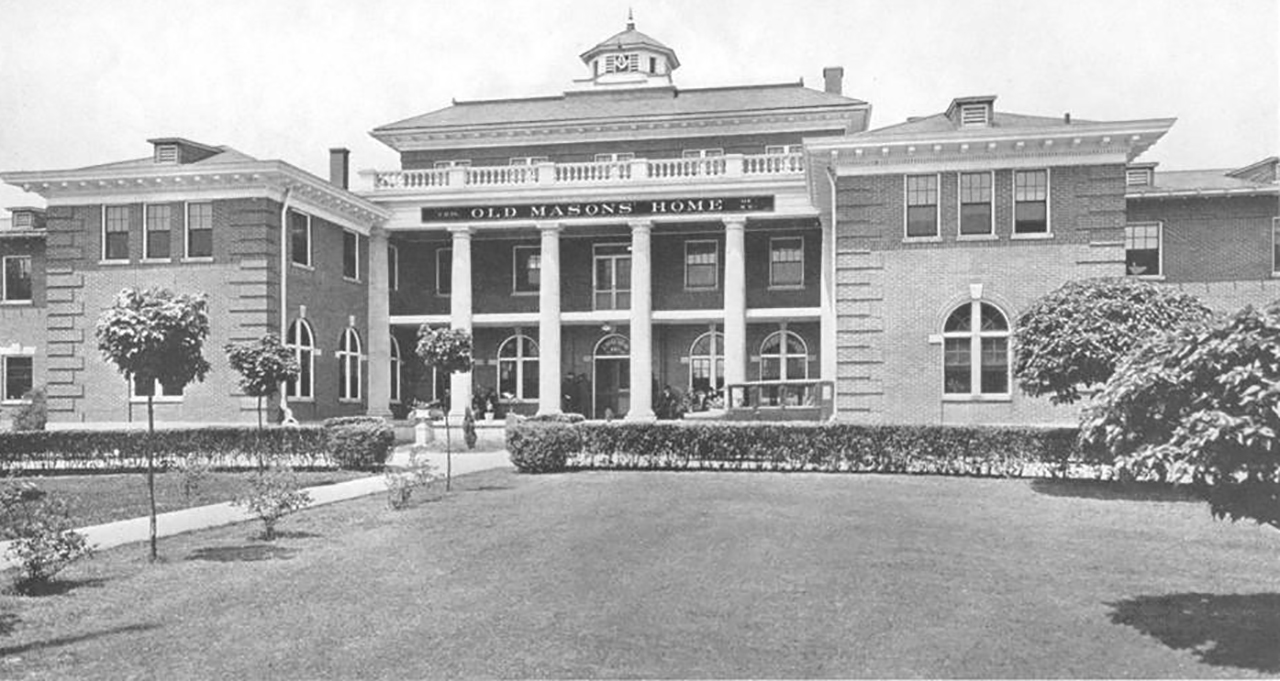
The Old Mason’s Home, caring for elderly Masons, opens in Shelbyville, 1901 -
1907 To improve conditions for the homeless children who lived in the Home, a new building was added that contained a small chapel, six classrooms and a basement.
-
1908 A building was created to house the industries of the Home. It was divided into three departments: printing office, shoemaking department and woodwork department.
-
1918 Influx of children orphaned by World War I and the influenza epidemic overcrowds the Home. Plans commence to raise money for a new home on a larger site.
-
1920 In October, Million Dollar Committee appointed to collect for the new Home. Past Grand Master Garnett proposed a “committee of five be appointed…to devise plans and carry on a campaign for the purpose of raising a million dollars” to be used by the Board of Directors to devise plans that would address the increasing inadequacy of the Home. It would come to be known as the “Million Dollar Committee.”
-
1924 The Home received the largest donation at the time. Mr. Robert Tyler, Hickman Lodge No. 761, died on January 13, 1924. He left the entirety of his estate ($313,264) and 327 acres of a Mississippi valley farm, including his home.
-
1924 The Superintendent and Mrs. Adams took 100 children on a summer vacation to Oakwood Farm in Hickman, Ky.
-
1925 127 acres is acquired between the Louisville city limits and St. Matthews, and the cornerstone laid for construction of what would become a schoolhouse.
-
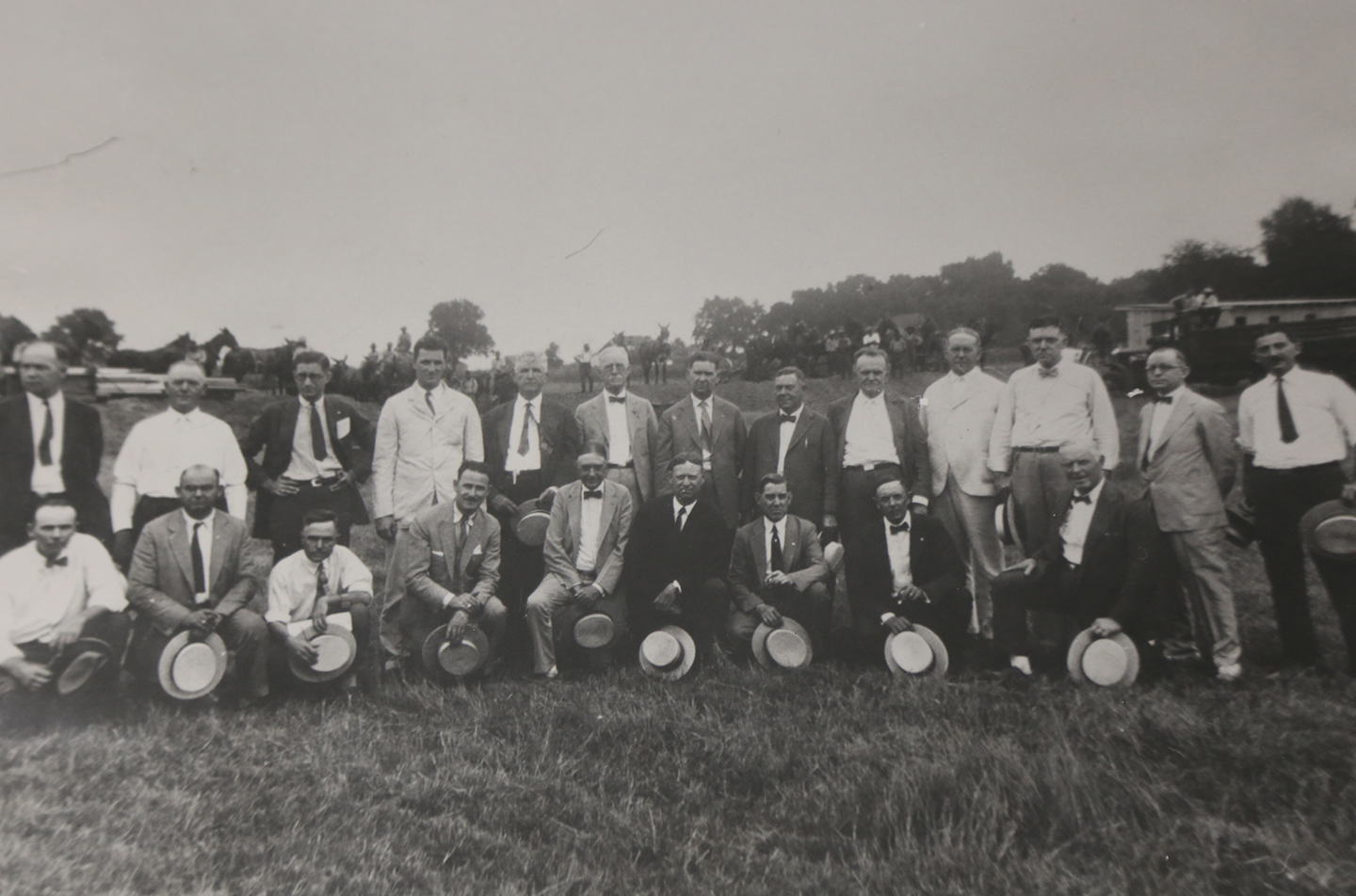
Groundbreaking, Million Dollar Committee and Building Committee, 1925 -
1926 The new Home along Frankfort Avenue, the site of Masonic Homes of Kentucky today, is dedicated and residents move from the old Home. It is designed to be a self-sufficient campus.
-
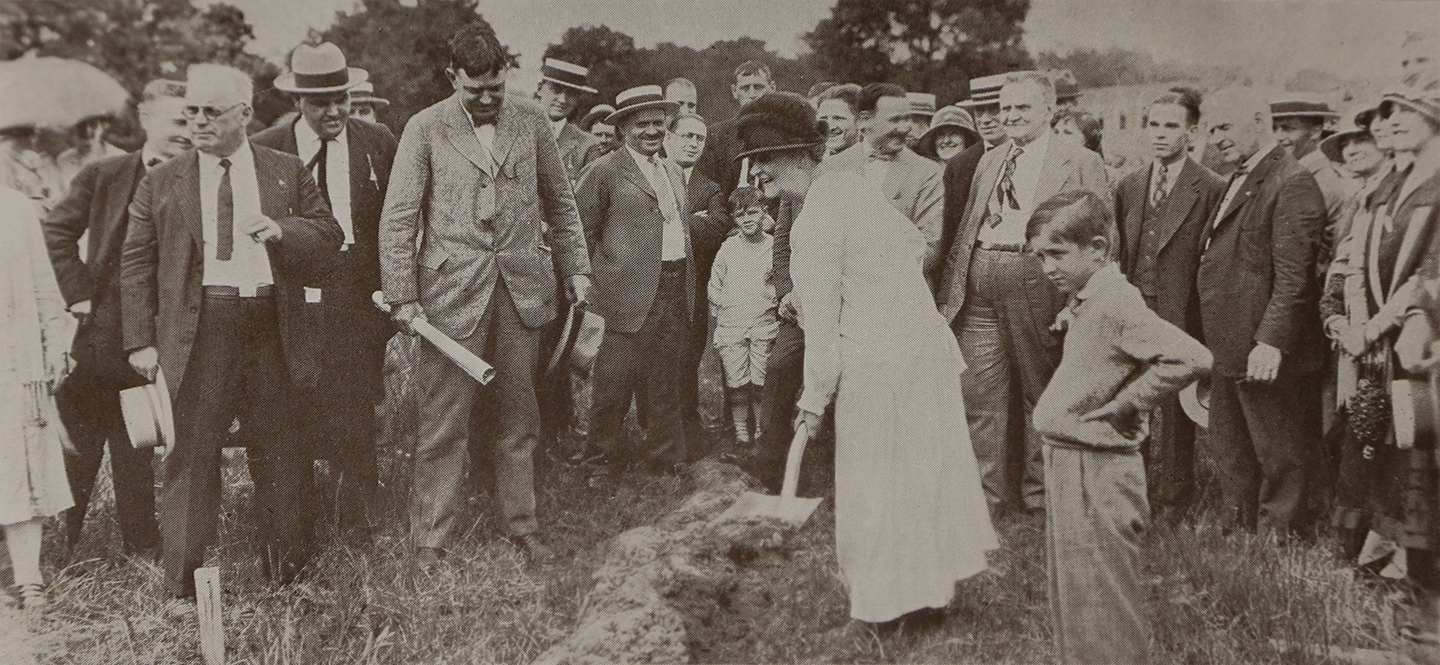
Miss Annie Davies Breaking Ground for Hospital at New Home Site, 1926 -
1927 On August 15th, 18 buildings were complete and 427 children were brought by bus and car to live in eight cottages. Thirty-five widows were transported to the Original Widows Building, now known as Cottage 9. Original infirmary was built by the St. Johns Day League in 1927 with 24 beds.
-

Historic Infirmary Facade, 1927 -
1928 Noted landscape architects the Olmsted Brothers complete the site’s master plan.
-
1929 On April 6th, The “bond fire” occurred when Grand Treasurer James Garnett called for the bonds that had been sold for the completion of the new Home. The destruction of these bonds left the home debt free.
-

Burning Gold Real Estate Bonds, 1929 -
1930 The largest population of children, 632, lives at the Louisville home.
-
1930 Laura Johnson comes to Masonic Homes in the Fall of 1930, a young woman on a new course.
-
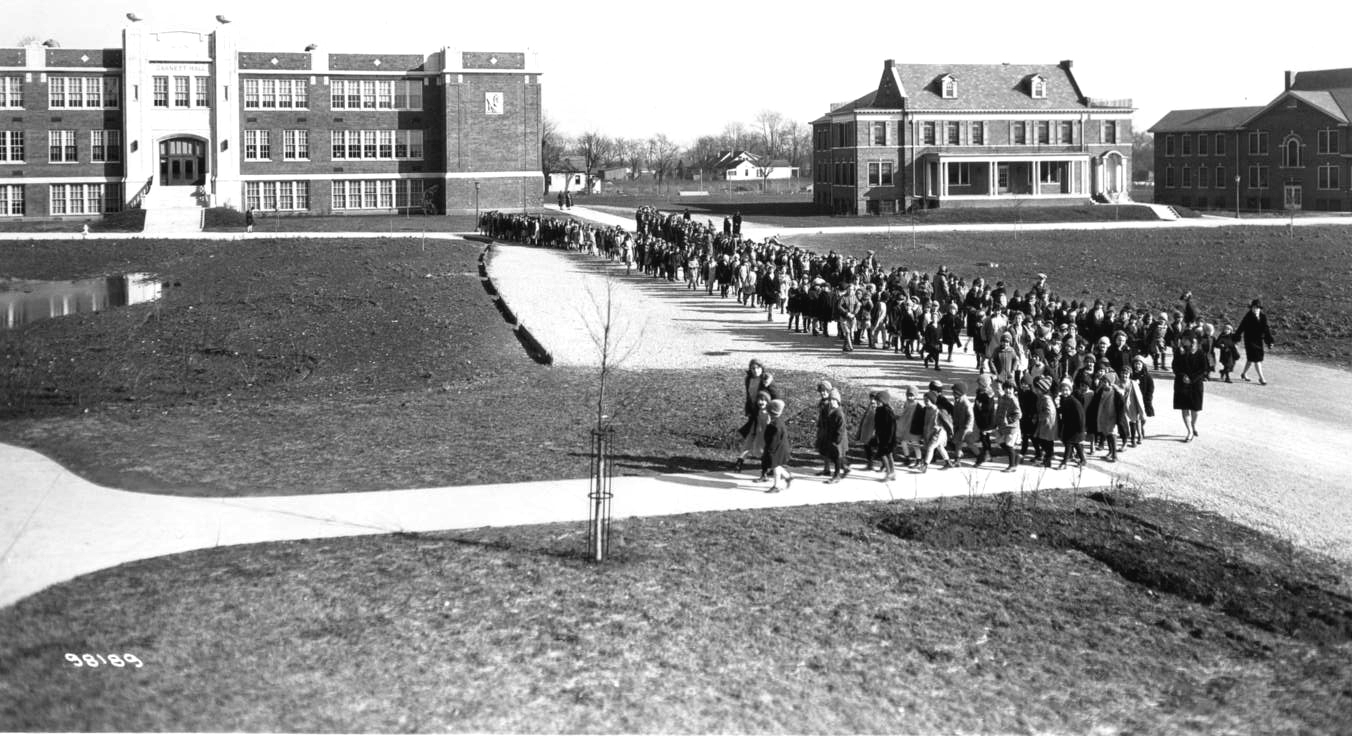
600 children respond to steamboat whistle at the Boiler Room, 1930 -
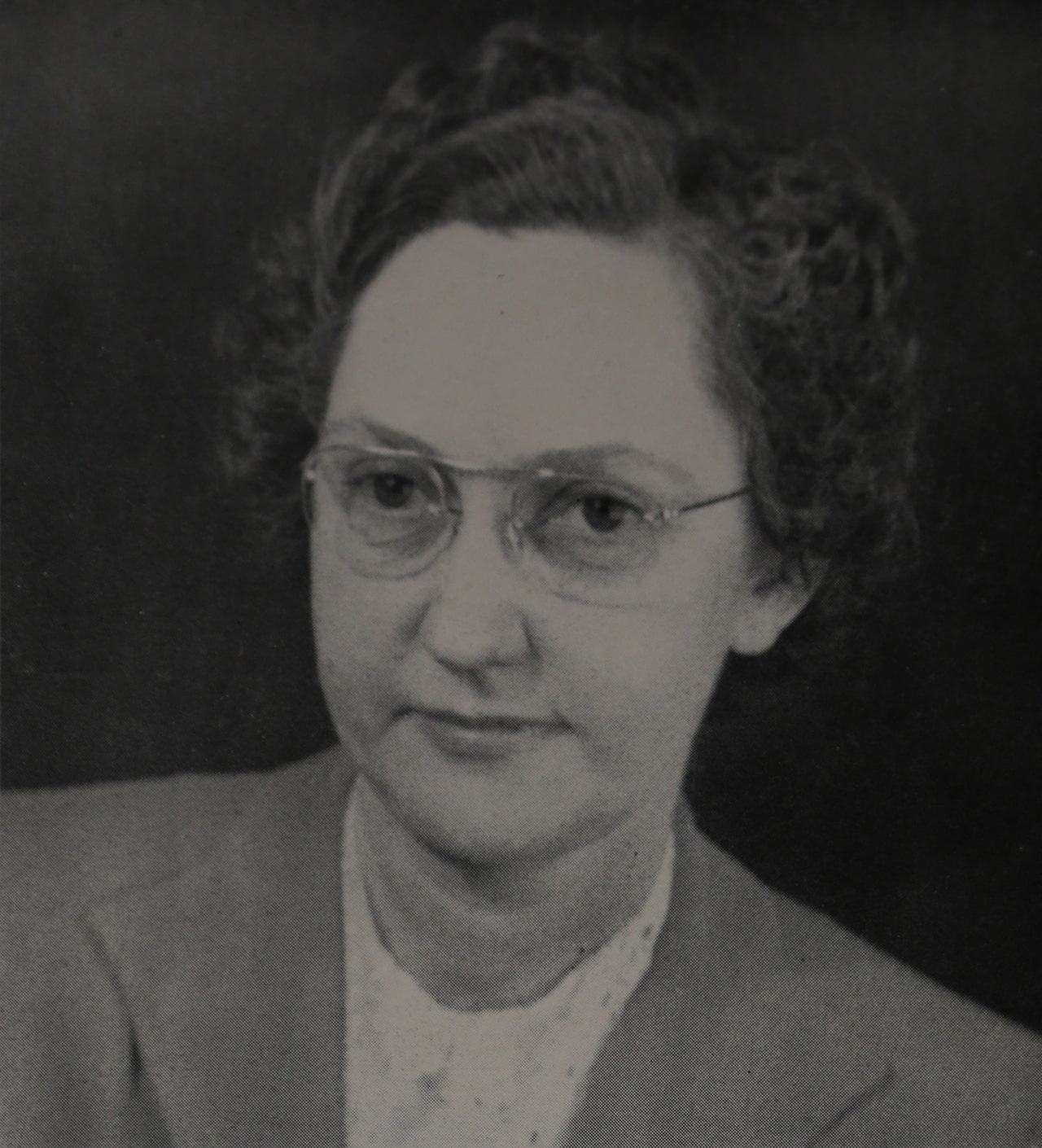
Laura Johnson, 1930 -
1936 In July, Past Grand Master John L. Phillips conceived the idea to get a post office at Masonic Home. He went to Washington, DC at his own expense to do so. He became the first postmaster of the 4th class Post Office, as well as superintendent and served for 10 years.
-
1954 The Home’s on-campus school is closed and children living at the Home attend public schools.
-
1954 Two wings were added with 10 rooms on each side of the original building. The 20 rooms contained 40 beds. $15,000 was donated ($750/room) to buy furniture for the 20 rooms.
-
1954 The Print Shop, which served as a training school for young men to become printers, had to change when the children began to attend public schools in 1954. Print Shop continued to grow until it became a Commercial Shop and Print Shop for Masonic Home Journal and Grand Lodge Proceedings.
-
1954 — 1959 First Masonic children graduated from Eastern High, Middletown High. By the fall of 1955, there were 98 children and 150 widows at the Home.
-
1956 Kentucky Masonry had the honor of hosting the annual meeting of Masonic Homes Executives Association on the United States on June 17, 18, and 19. Guests included Kentucky Governor A.B. Happy Chandler, and delegates were greeted from around the country by G.A. Heuser, President of the Old Masons Home and Grand Master Fred B. Layman.
-
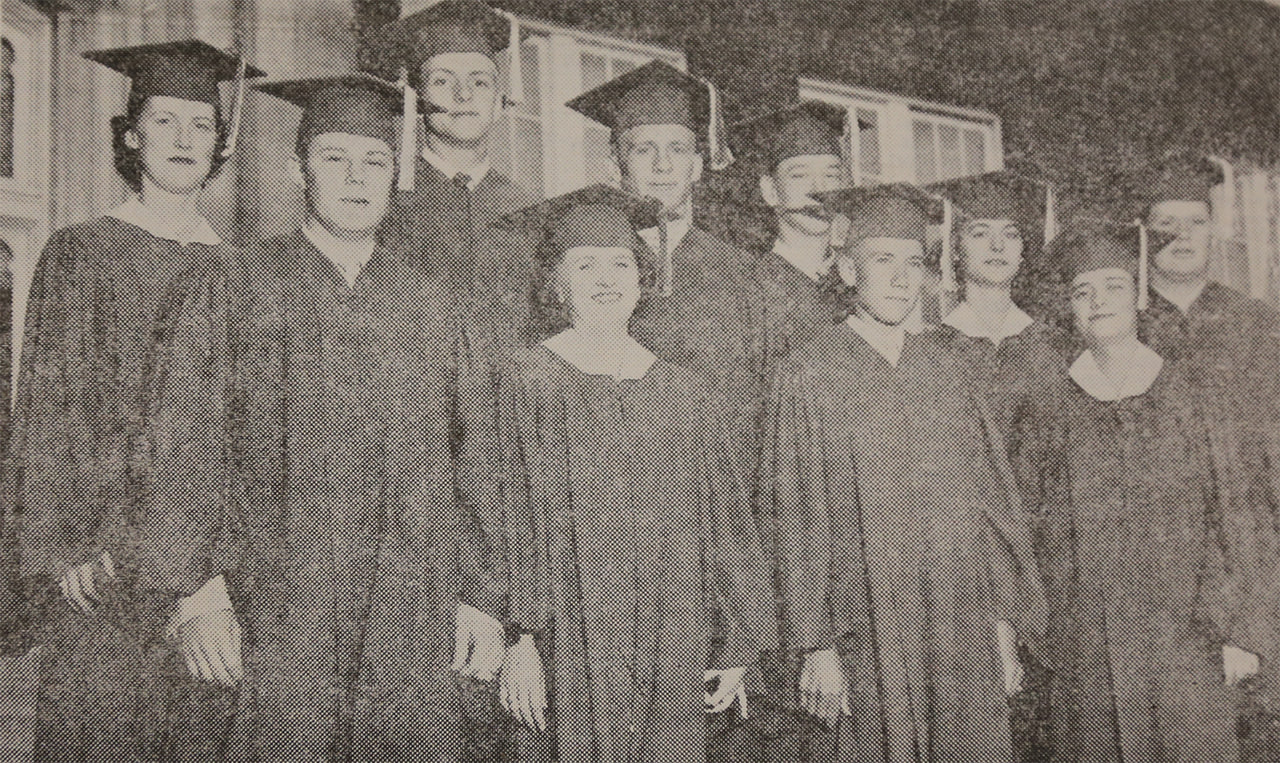
Eastern High class, 1956 -
1959 Cottage 8 was renovated with 25 private rooms, dining room, kitchen and living room. The renovation cost $80,000. It was dedicated on April 21, 1959 for the widows.
-
1960 First student graduation from Waggener High.
-
1960 The Rock Creek Riding Club donated two horses.
-
1960 Cottage 7 was also remodeled for the widows with 32 private rooms. Grandmaster John R. Vinson named the project “Operation Craftsman.” Little banks were given to each lodge for the contributions.
-

1966 The new barn caught fire. Five thousand bales of alfalfa and the structure gave a loss of $22,000 to the home.
-
1967 The Home’s 100th anniversary. There were 236 people living there; 67 children and 169 widows. Eighty of the widows were in the infirmary. Grand Master Davie Smith proclaimed that the celebration of the 100th Anniversary would be June 11, 1967 on the Home Grounds. In the evening, the day culminated with the Alumni Reunion Banquet in the Main Dining Room.
-

1974 On April 3rd, for the second time in our history, a tornado hit Louisville, including the Home. The first time was in 1875, and the center part of the old home on Second Street was destroyed. On April 3rd, the city of Louisville suffered much devastation, and Chenoweth Elementary, built on land purchased from the Masonic Home, was demolished, causing children to finish their year at Crosby Middle School.
-
1978 Groundbreaking ceremony for Skilled Care “D” Wing. Project to cost $800,000.
-
1981 Sherry McCaulley was named Activities Director. The department had grown to promote activities for the widows.
-
1989 The Home’s last child leaves, and it focuses on providing senior care, building the Pillars Assisted Care Center.
-
1993 Masonic Widows and Orphans Home and Old Mason’s Home merge to form Masonic Homes of Kentucky.
-
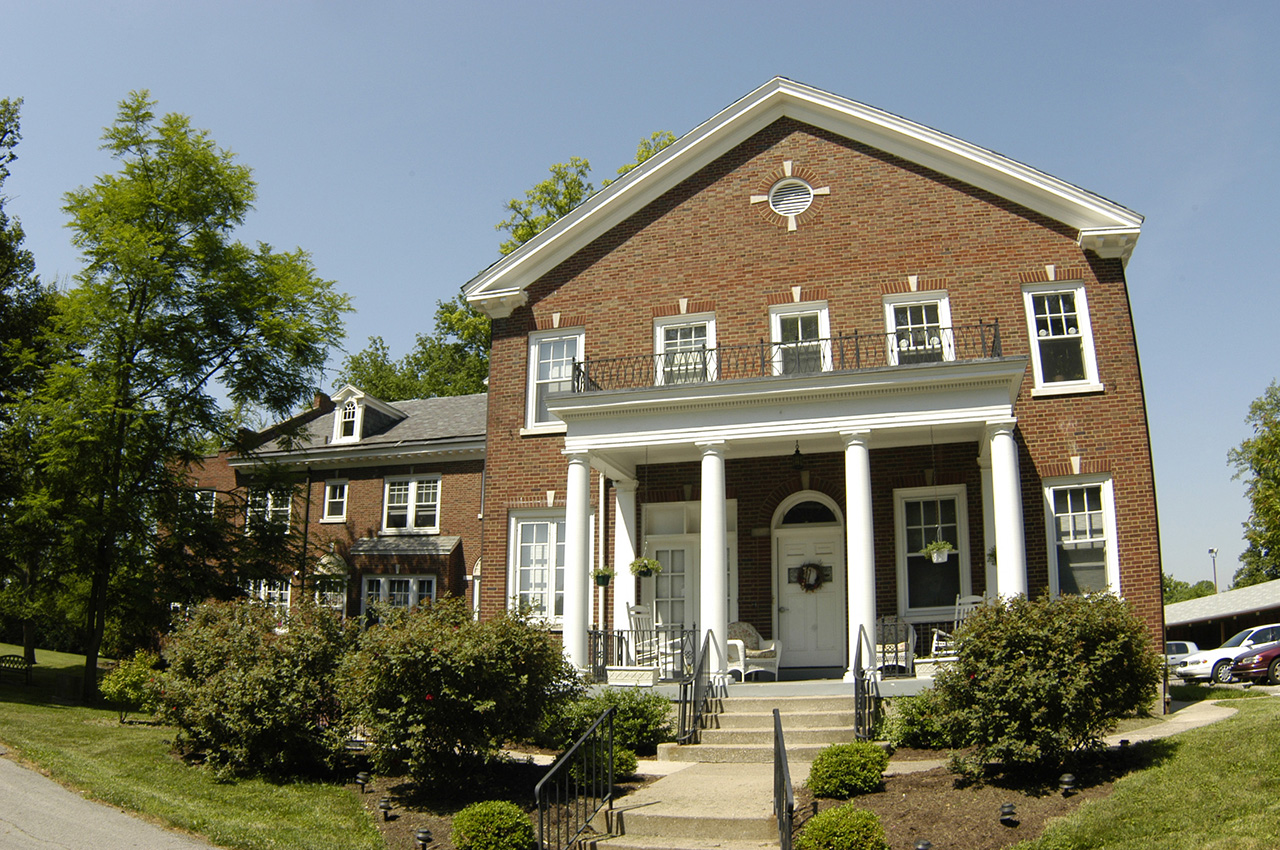
1997 Six of the cottages that housed widows and orphans are renovated into senior apartments. The dining hall is renovated and renamed The Olmsted, becoming a Louisville landmark for events.
-
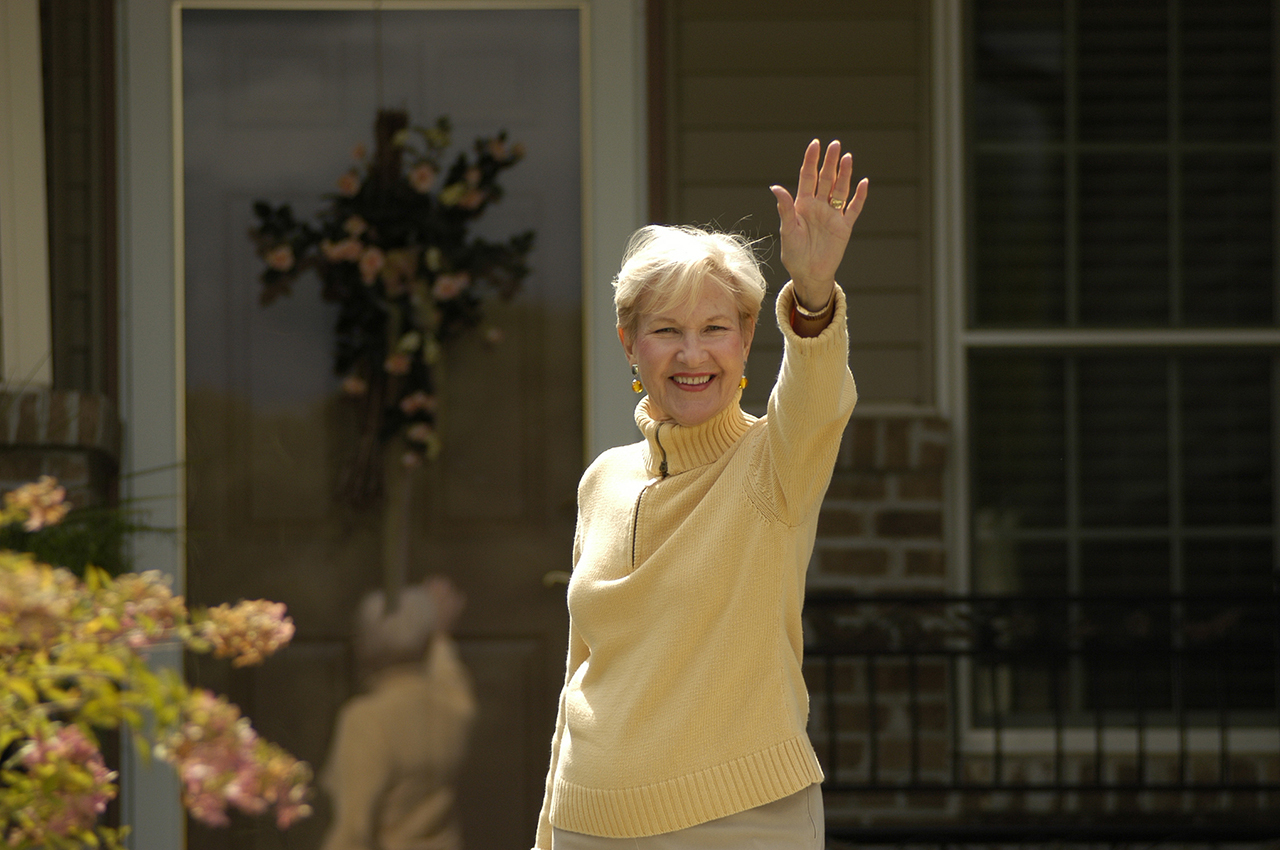
2001 Spring Hill Village Retirement Community in Taylor Mill is established.
-
2002 The Louisville Campus is named to the National Register of Historic Places.
-
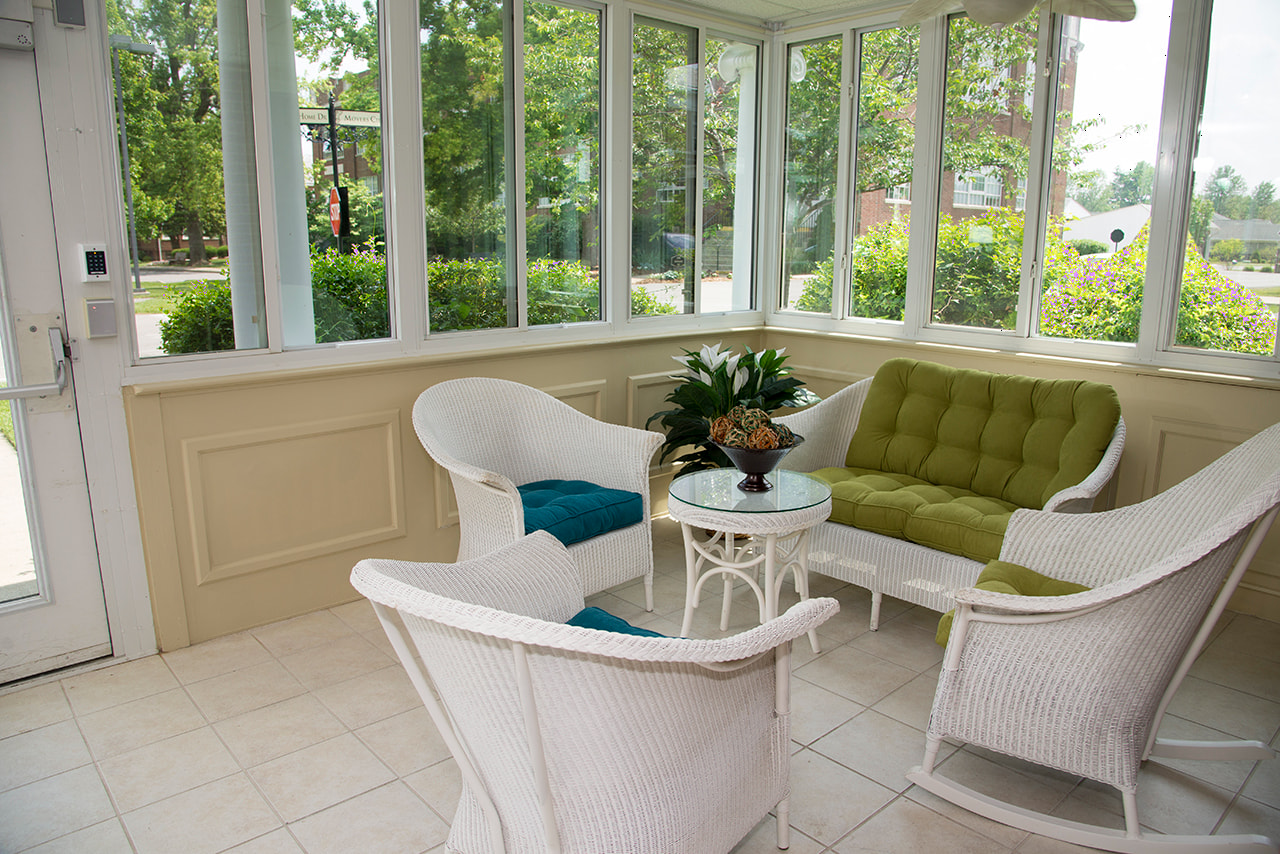
2004 Masonic Home of Louisville opens Sally’s Garden, a memory care neighborhood.
-
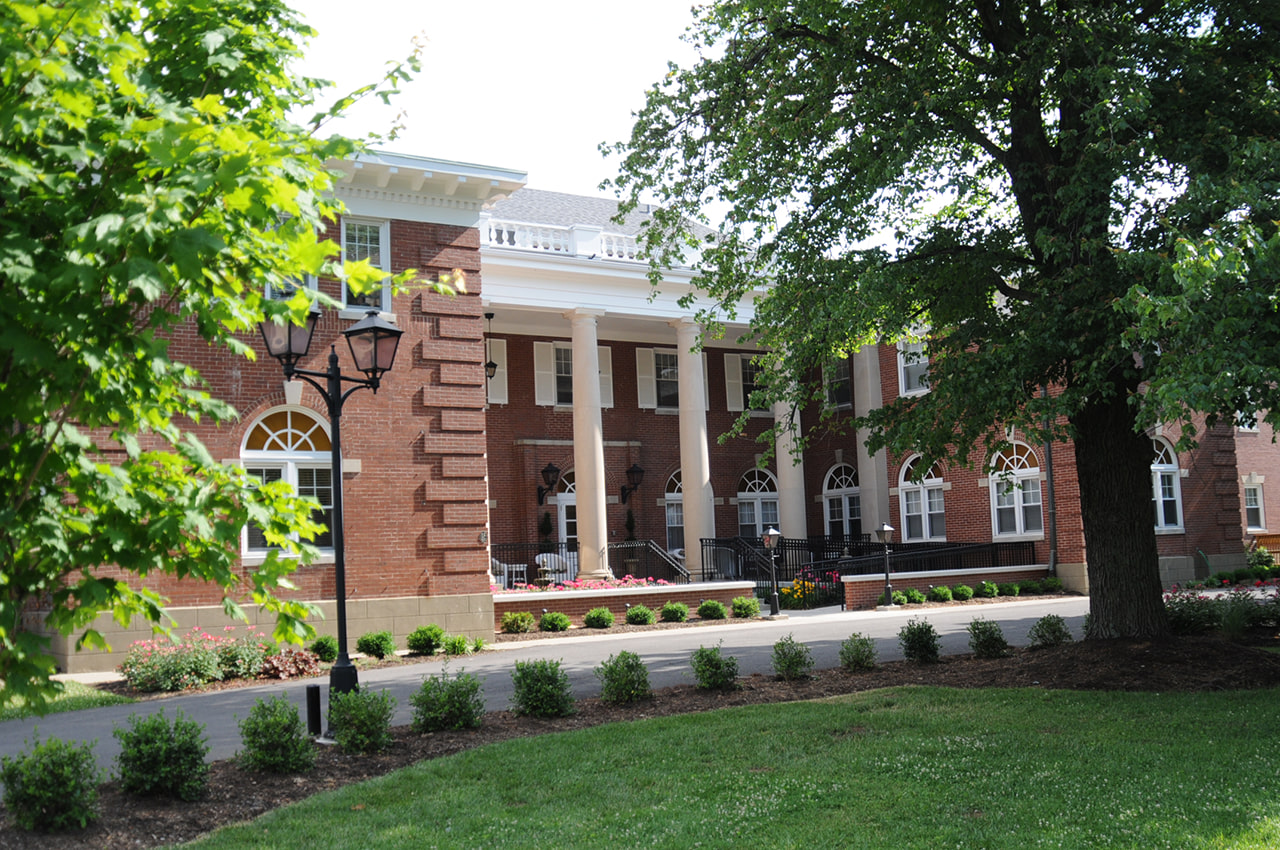
2007 The Pillars Assisted Living Community opens in Shelbyville. The Masonic Home Alumni Association presents A Place Called Home, a bronze sculpture honoring Kentucky Masons, on the Louisville Campus.
-
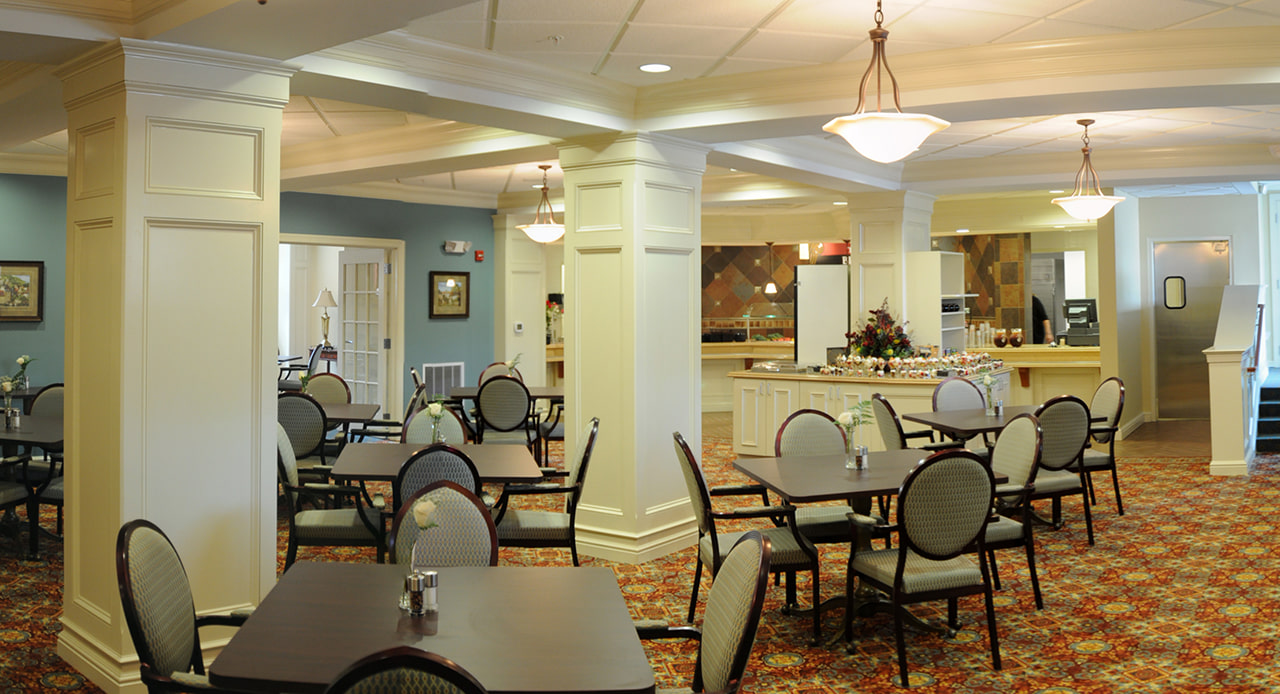
2009 Club Olmsted and The Bistro open in the lower level of The Olmsted, featuring a card room, art and craft studio, theater and billiard room.
-

2009 Renovation at Masonic Home of Shelbyville yields Rehabilitation Center, new dining venue and short-stay accommodations.
-
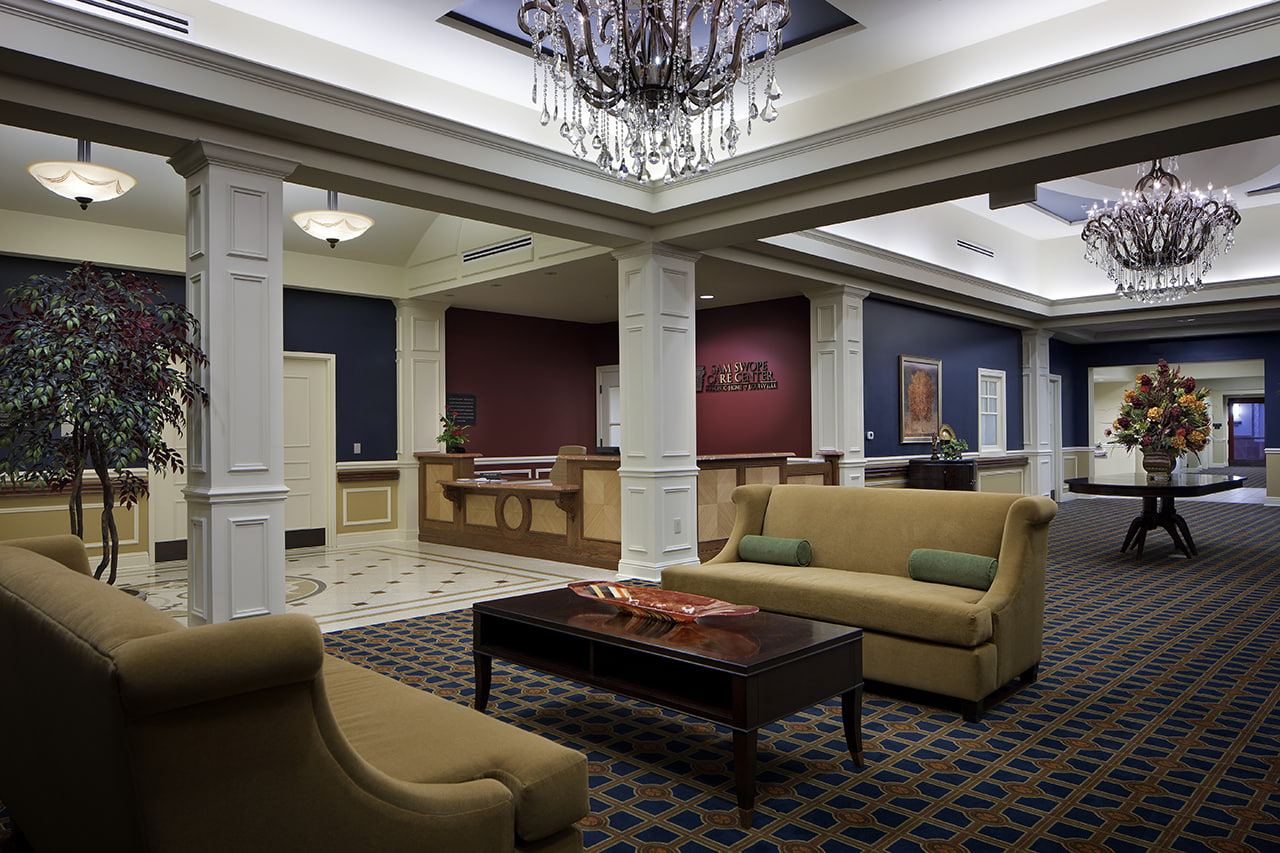
2010 The $40 million Sam Swope Care Center opens at Masonic Home of Louisville offering person-centered care in a home environment unlike any other. Rehabilitation and dialysis are also offered.
-

2011 Sproutlings Pediatric Day Care & Preschool opens on the Louisville Campus, the only program in the region serving medically fragile and typical children.
-

2012 Miralea Active Lifestyle Community, the region’s only Life Care community, opens on the Louisville Campus.
-
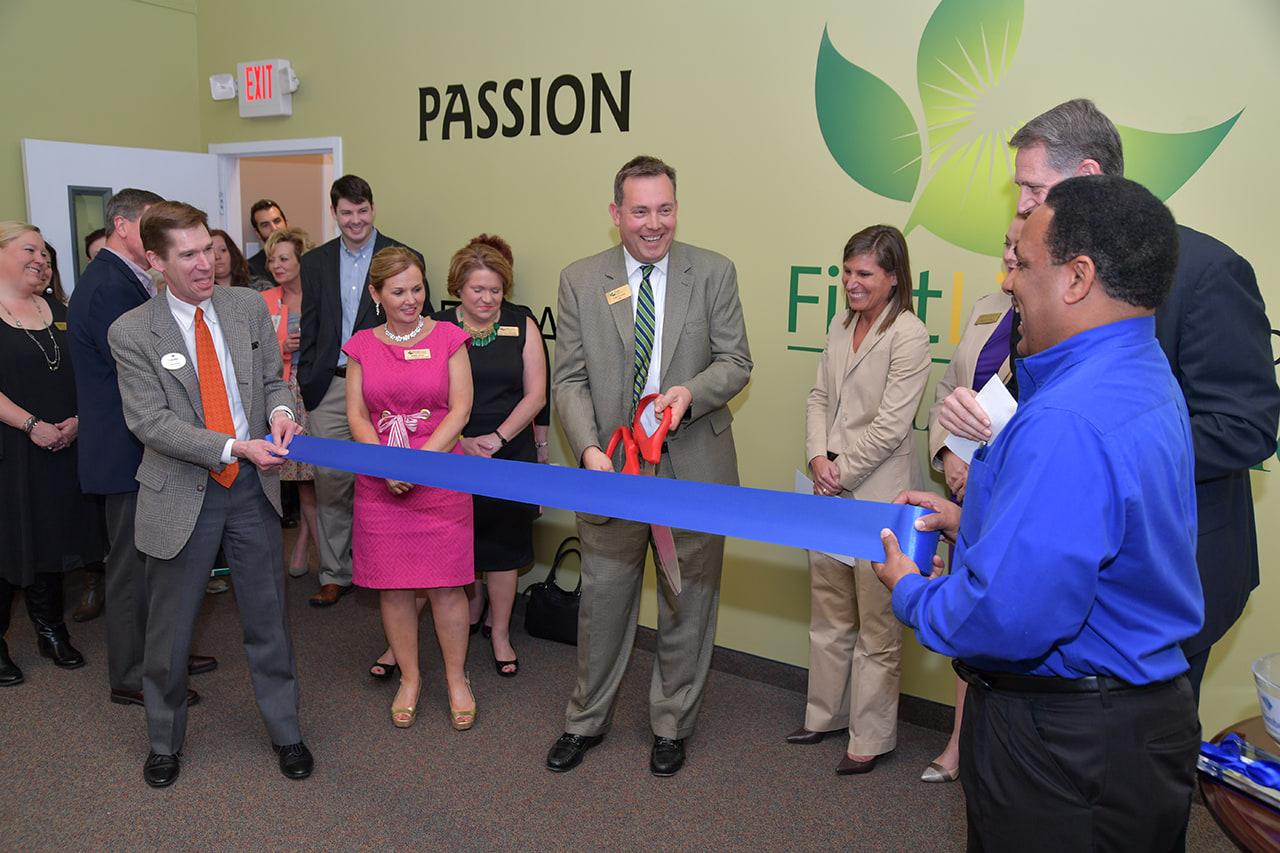
2016 Masonic Homes and FirstLight HomeCare form a joint venture to offer non-medical in-home care.
-
2018 Coming soon: Masonic Homes will add The Meadow, a 122-apartment independent living community, and Grove Pointe, a 48-unit assisted living community to its Louisville Campus.
-

Coming Soon: Grove Pointe, 2018 -
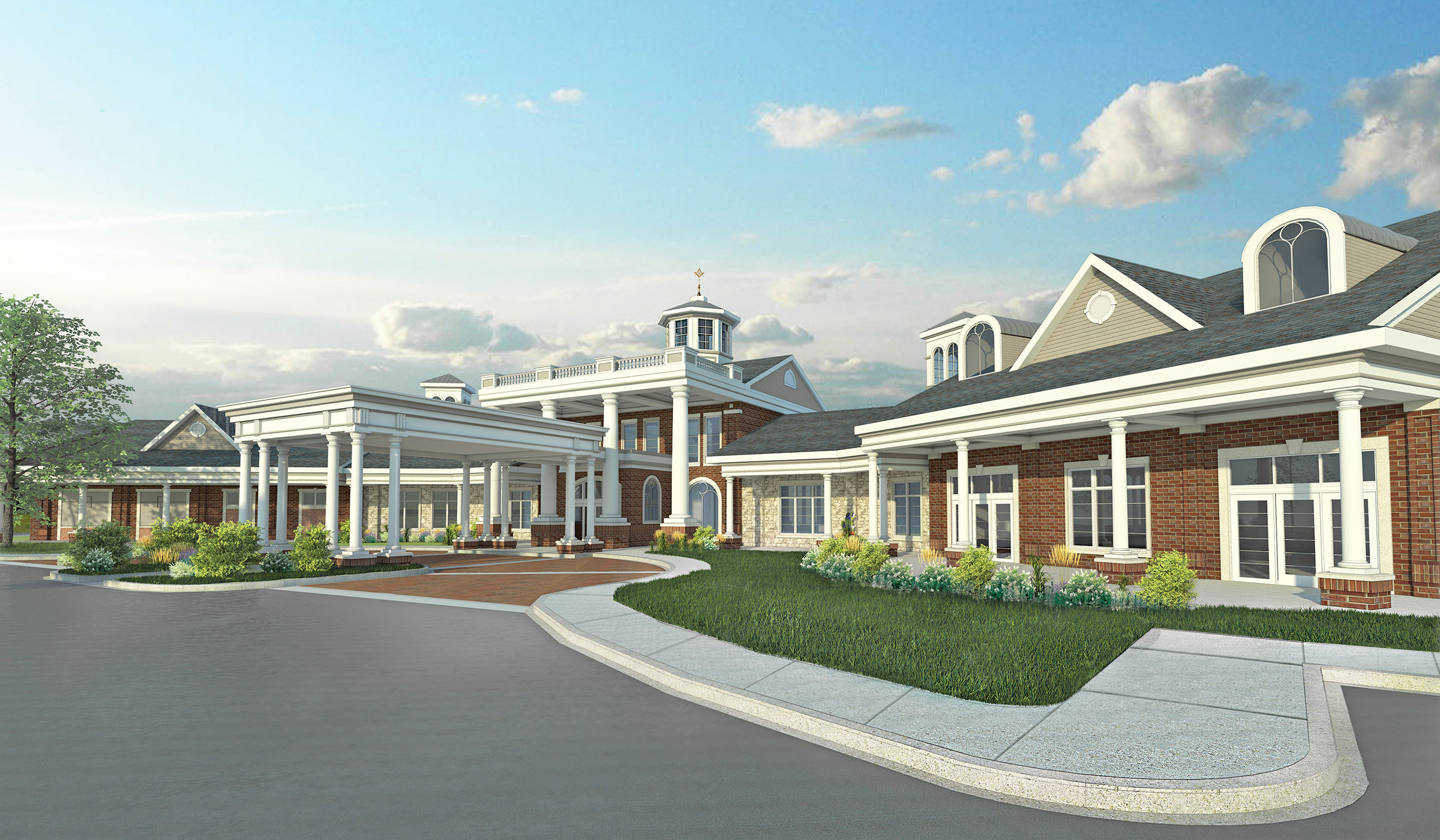
Coming Soon: The Meadow, 2018 -
Add to Our Story Enjoy looking through these memories?
Find a Community Near You
Join one of our communities and start making your own timeline.



